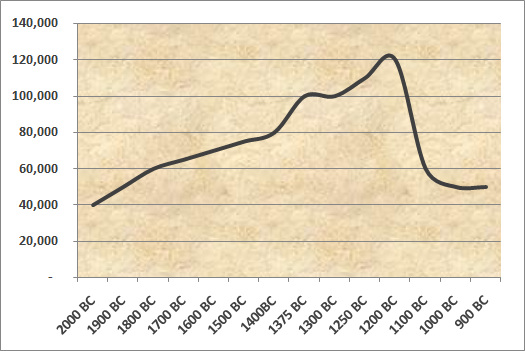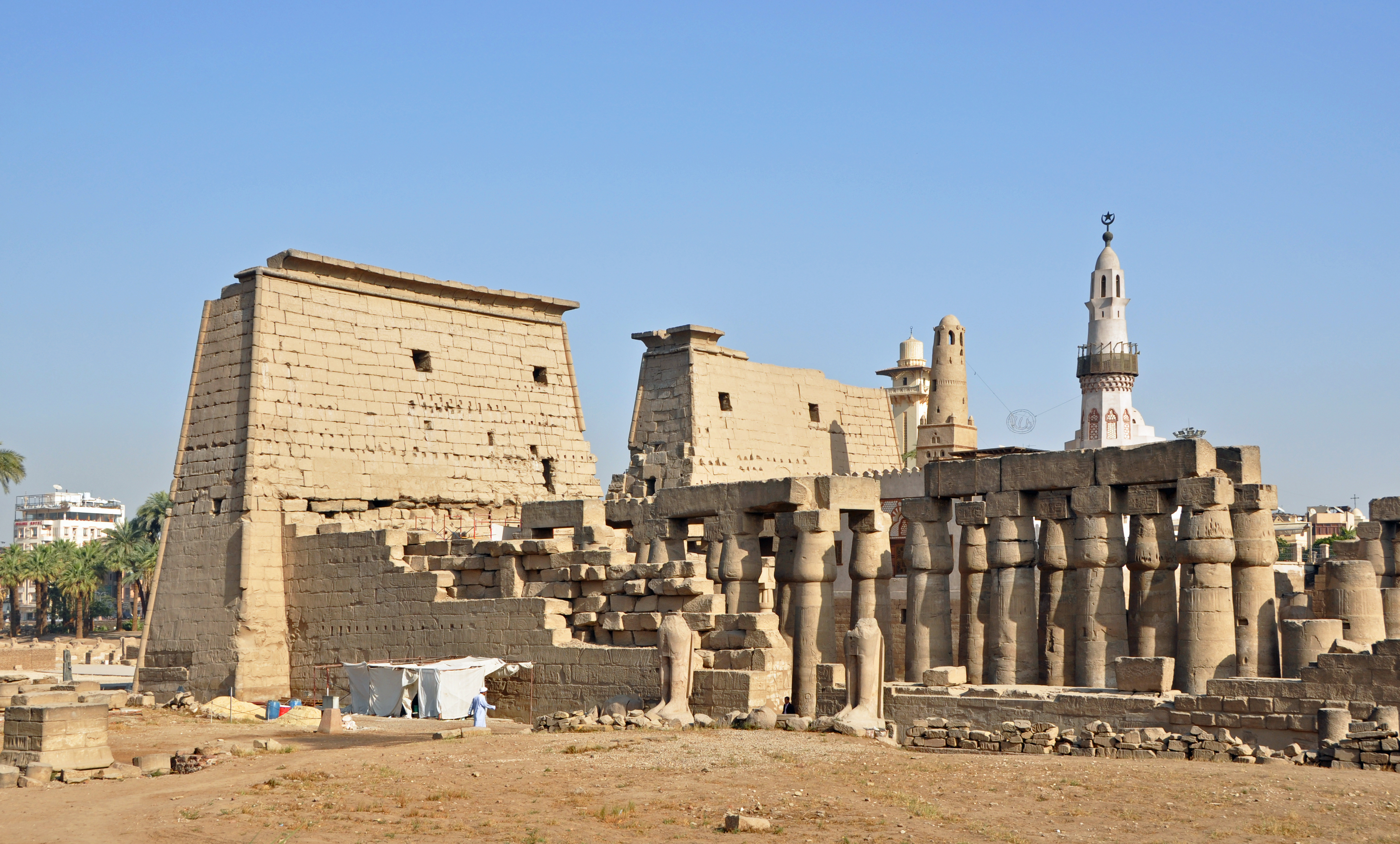|
TT171
The Thebes, Egypt, Theban Tomb TT171 is located in Sheikh Abd el-Qurna, part of the Theban Necropolis, on the west bank of the Nile, opposite to Luxor. The name of the owner is not known. His wife was named Isis (Aset) according to an inscription on the facade. The tomb dates to the Eighteenth Dynasty of Egypt.Porter, Bertha and Moss, Rosalind, ''Topographical Bibliography of Ancient Egyptian Hieroglyphic Texts, Statues, Reliefs and Paintings'' Volume I: The Theban Necropolis, Part I. Private Tombs, Griffith Institute. 1970, p. 279, See also * List of Theban tombs References {{DEFAULTSORT:TT171 Theban tombs Buildings and structures of the Eighteenth Dynasty of Egypt ... [...More Info...] [...Related Items...] OR: [Wikipedia] [Google] [Baidu] |
List Of Theban Tombs
The Theban Necropolis is located on the west bank of the Nile, opposite Luxor, in Egypt. As well as the more famous royal tombs located in the Valley of the Kings and the Valley of the Queens, there are numerous other tombs, more commonly referred to as Tombs of the Nobles (Luxor), the burial places of some of the powerful courtiers and persons of the ancient city. There are at least 415 cataloged tombs, designated TT for Theban Tomb. There are other tombs whose position has been lost, or for some other reason do not conform to this classification. Theban tombs tended to have clay funerary cones placed over the entrance of the tomb chapels. During the New Kingdom of Egypt, New Kingdom they were inscribed with the title and name of the tomb owner, sometimes with short prayers. Of the 400 recorded sets of cones, only about 80 come from cataloged tombs. The numbering system was first published Arthur Weigall's 1908 ''Report on the Tombs of Shêkh Abd’ el Gûrneh and el Assasîf'' ( ... [...More Info...] [...Related Items...] OR: [Wikipedia] [Google] [Baidu] |
Sheikh Abd El-Qurna
The necropolis of Sheikh Abd el-Qurna () is located on the West Bank at Thebes, Egypt, Thebes in Upper Egypt. It is part of the archaeological area of Deir el-Bahari, and named after the domed tomb of the local saint. This is the most frequently visited cemetery on the Theban west bank, with the largest concentration of private tombs. Tombs * TT21 User, Scribe, Steward of king Thutmose I * TT22 Wah, later usurped by Meryamun * TT23 – TT23, Tjay * TT30 Khonsmose, Amun treasury official, Ramesside * TT31 – Khonsu (TT31), Khonsu * TT38 Djeserkaraseneb, Scribe, Counter of grain in the granary of the divine offerings of Amun * TT41 Amenemopet called Ipy, Amun temple high steward * TT42 Amenmose, Captain of troops, Eyes of the King in the Two Lands of the Retenu * TT43 Neferrenpet, Overseer of the kitchen (stores?) of Pharaoh * TT44 Amenemhab, wab-priest in front of Amun * TT45 Djehuty, Steward of high priest of Amun Mery (High Priest of Amun), Mery * TT46 Ramose, Steward o ... [...More Info...] [...Related Items...] OR: [Wikipedia] [Google] [Baidu] |
Theban Tombs
The Theban Necropolis is located on the west bank of the Nile, opposite Luxor, in Egypt. As well as the more famous royal tombs located in the Valley of the Kings and the Valley of the Queens, there are numerous other tombs, more commonly referred to as Tombs of the Nobles (Luxor), the burial places of some of the powerful courtiers and persons of the ancient city. There are at least 415 cataloged tombs, designated TT for Theban Tomb. There are other tombs whose position has been lost, or for some other reason do not conform to this classification. Theban tombs tended to have clay funerary cones placed over the entrance of the tomb chapels. During the New Kingdom of Egypt, New Kingdom they were inscribed with the title and name of the tomb owner, sometimes with short prayers. Of the 400 recorded sets of cones, only about 80 come from cataloged tombs. The numbering system was first published Arthur Weigall's 1908 ''Report on the Tombs of Shêkh Abd’ el Gûrneh and el Assasîf'' ( ... [...More Info...] [...Related Items...] OR: [Wikipedia] [Google] [Baidu] |
Thebes, Egypt
Thebes (, , ''Thēbai''), known to the ancient Egyptians as Waset, was an ancient Egyptian city located along the Nile about south of the Mediterranean. Its ruins lie within the modern Egyptian city of Luxor. Thebes was the main city of the fourth Upper Egyptian nome (Sceptre nome) and was the capital of Egypt for long periods during the Middle Kingdom and New Kingdom eras. It was close to Nubia and the Eastern Desert, with its valuable mineral resources and trade routes. It was a religious center and the most venerated city during many periods of ancient Egyptian history. The site of Thebes includes areas on both the eastern bank of the Nile, where the temples of Karnak and Luxor stand and where the city was situated; and the western bank, where a necropolis of large private and royal cemeteries and funerary complexes can be found. In 1979, the ruins of ancient Thebes were classified by UNESCO as a World Heritage Site. Toponymy The Egyptian name for Thebes was ''w� ... [...More Info...] [...Related Items...] OR: [Wikipedia] [Google] [Baidu] |
Theban Necropolis
The Theban Necropolis () is a necropolis on the west bank of the Nile, opposite Thebes, Egypt, Thebes (Luxor) in Upper Egypt. It was used for ritual burials for much of the Ancient Egypt, Pharaonic period, especially during the New Kingdom of Egypt, New Kingdom. Mortuary temples * Deir el-Bahri ** Mortuary Temple of Hatshepsut ** Deir el-Bahri#Mortuary Temple of Mentuhotep II, Mortuary temple of Mentuhotep II ** Deir el-Bahri#Mortuary Temple of Thutmoses III, Mortuary temple of Thutmose III * Medinet Habu * Mortuary Temple of Amenhotep III ** Colossi of Memnon * Mortuary Temple of Merneptah * Mortuary Temple of Ramesses IV * Mortuary Temple of Thutmose IV * Mortuary Temple of Thutmose III * Mortuary Temple of Twosret * Temple of Nebwenenef * Kurna, Qurna ** Mortuary Temple of Seti I * Mortuary Temple of Amenhotep II * Ramesseum (Mortuary Temple of Ramesses II) Royal Necropolis * Valley of the Kings (Modern: "''Wadi el-Muluk''") * Valley of the Queens (Modern: "''Biban el-Harim''" ... [...More Info...] [...Related Items...] OR: [Wikipedia] [Google] [Baidu] |
Nile
The Nile (also known as the Nile River or River Nile) is a major north-flowing river in northeastern Africa. It flows into the Mediterranean Sea. The Nile is the longest river in Africa. It has historically been considered the List of river systems by length, longest river in the world, though this has been contested by research suggesting that the Amazon River is slightly longer.Amazon Longer Than Nile River, Scientists Say Of the world's major rivers, the Nile has one of the lowest average annual flow rates. About long, its drainage basin covers eleven countries: the Democratic Republic of the Congo, Tanzania, Burundi, Rwanda, Uganda, Kenya, Ethiopia, Eritrea, South Sudan, Sudan, and Egypt. In pa ... [...More Info...] [...Related Items...] OR: [Wikipedia] [Google] [Baidu] |
Luxor
Luxor is a city in Upper Egypt. Luxor had a population of 263,109 in 2020, with an area of approximately and is the capital of the Luxor Governorate. It is among the List of oldest continuously inhabited cities, oldest continuously inhabited cities in the world. Luxor has frequently been characterized as the ''world's greatest open-air museum'', as the ruins of the Egyptian temple complexes at Karnak and Luxor Temple, Luxor stand within the modern city. Immediately opposite, across the River Nile, lie the monuments, temples and tombs of the West Bank Theban Necropolis, which includes the Valley of the Kings and the Valley of the Queens. Thousands of tourists from all around the world arrive annually to visit Luxor's monuments, contributing greatly to the economy of the modern city. Yusuf Abu al-Haggag is the prominent Muslim historical figure of Luxor. Etymology The name ''Luxor'' derives from the Arabic , meaning "castle" or "palace", in the plural form ''al-quṣūr'' (� ... [...More Info...] [...Related Items...] OR: [Wikipedia] [Google] [Baidu] |
Eighteenth Dynasty Of Egypt
The Eighteenth Dynasty of Egypt (notated Dynasty XVIII, alternatively 18th Dynasty or Dynasty 18) is classified as the first dynasty of the New Kingdom of Egypt, the era in which ancient Egypt achieved the peak of its power. The Eighteenth Dynasty spanned the period from 1550/1549 to 1292 BC. This dynasty is also known as the Thutmoside Dynasty for the four pharaohs named Thutmose. Several of Egypt's most famous pharaohs were from the Eighteenth Dynasty, including Tutankhamun. Other famous pharaohs of the dynasty include Hatshepsut (c. 1479 BC–1458 BC), the longest-reigning woman pharaoh of an indigenous dynasty, and Akhenaten (c. 1353–1336 BC), the "heretic pharaoh", with his Great Royal Wife, Nefertiti. The Eighteenth Dynasty is unique among Egyptian dynasties in that it had two Queen regnant, queens regnant, women who ruled as sole pharaoh: Hatshepsut and Neferneferuaten, usually identified as Nefertiti. History Early Dynasty XVIII Dynasty XVIII was founded by Ahmo ... [...More Info...] [...Related Items...] OR: [Wikipedia] [Google] [Baidu] |



